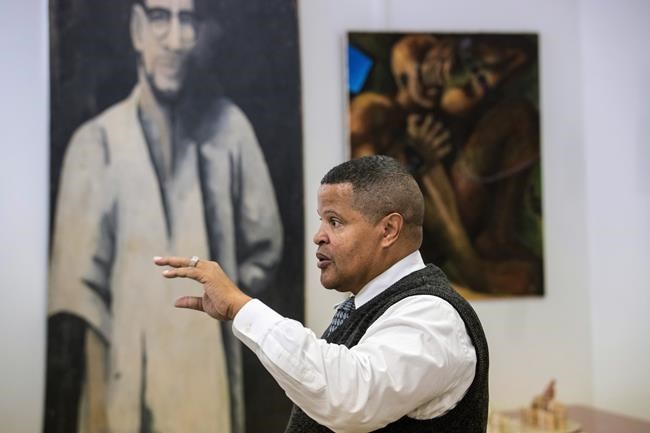
In a Wednesday, Oct 11, 2017 photo, Eric Ewing talks about pieces in the new Great Plains Black History Museum, in Omaha, Neb. The Great Plains Black History Museum is leaving a shopping mall for a larger location in northeast Omaha. (Chris Machian//Omaha World-Herald via AP)
Republished October 16, 2017 - 8:35 AM
Original Publication Date October 16, 2017 - 5:11 AM
OMAHA, Neb. - The Great Plains Black History Museum is leaving a shopping mall for a larger location in northeastern Omaha.
The museum has been occupying 800 square feet in Crossroads Mall, the Omaha World-Herald reported. Its new location in the historic Jewell Building has about 1,400 square feet. An open house is scheduled there for later this week.
The extra space is still not sufficient to display all of the museum's collection, said the museum's executive director, Eric Ewing. He plans to rotate exhibits in an effort to attract visitors to see fresh material. He estimated that the museum has about 100,000 pieces in its collection.
The museum has faced challenges since it opened in 1976. Its first home decayed as funding ebbed. For a time, it closed to the public altogether. The mall has been its small, temporary home since 2014.
Organizers have been moving the museum's collection out of the mall and into the new space for the past month. Among the items are a Gold Glove trophy and bat that belonged to legendary St. Louis Cardinals pitcher and Omaha native Bob Gibson.
The Jewell Building is listed on the National Register of Historic Places and has its own place in Omaha's history, said Michael Maroney, president of the Omaha Economic Development Corp., which owns the building.
Built in 1923 by James Jewell, the building's second floor once housed the Dreamland Ballroom, which hosted famous jazz and blues performers, including Louis Armstrong and Duke Ellington.
The museum is funded through memberships, corporate donations, grants and sales of museum publications, said museum board Frank Hayes. A long-term goal, he said, is a capital campaign to raise money for growth.
"We need to establish a foundation that makes it easier to raise money," Hayes said. "(We need to) let donors know we're going to be here for the long haul."
___
Information from: Omaha World-Herald, http://www.omaha.com
News from © The Associated Press, 2017